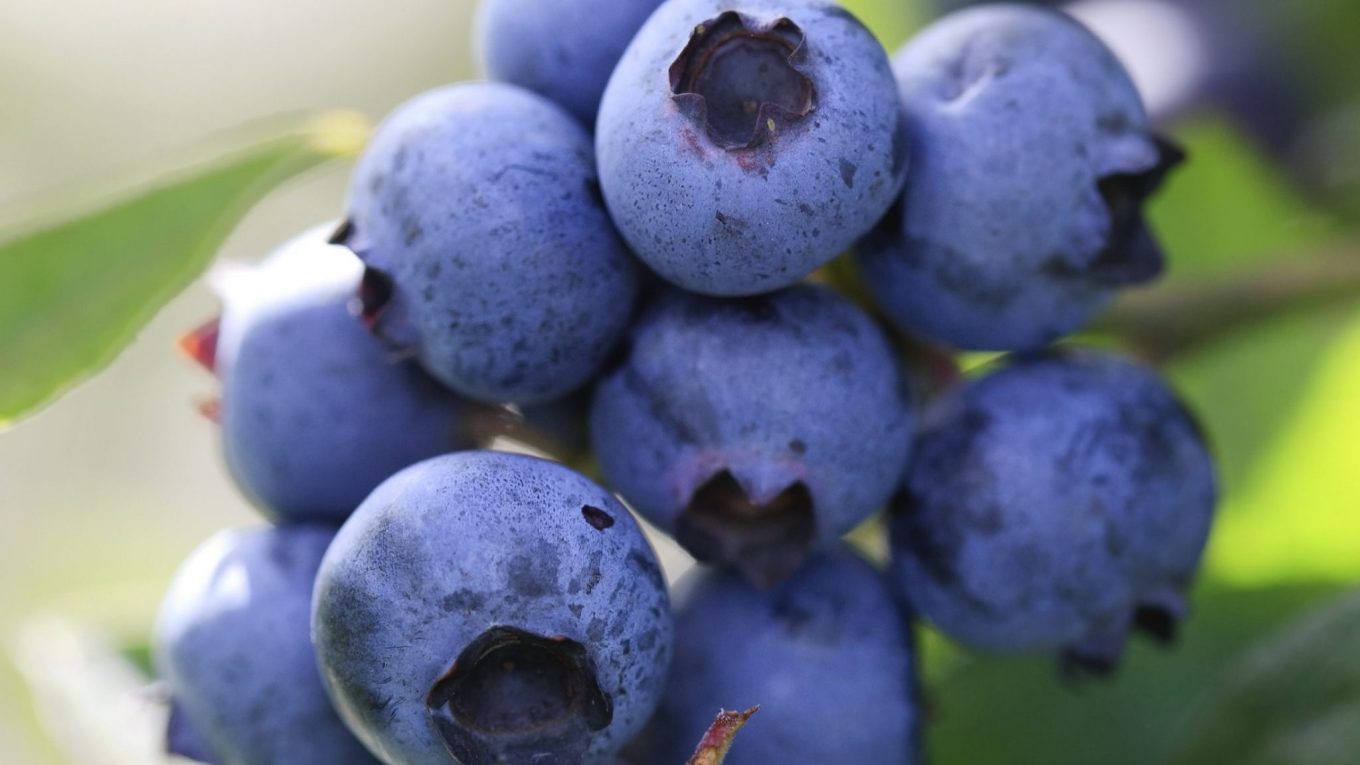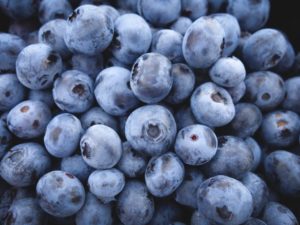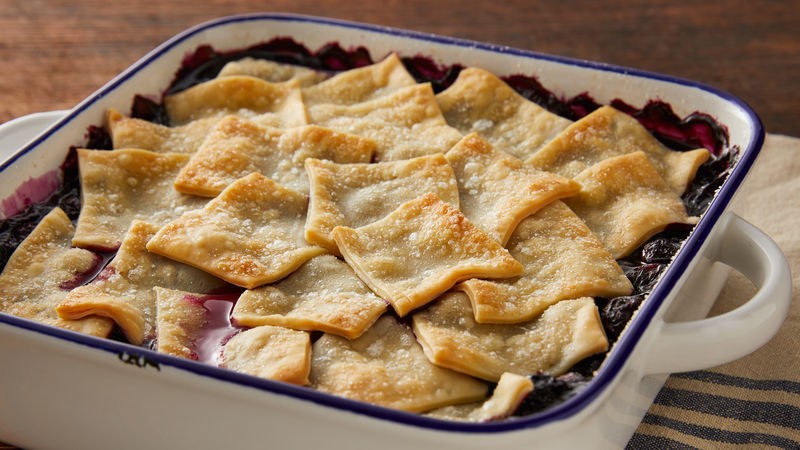The Best Blueberry Pie Recipe
An intense blueberry filling that thickens up just as the crust becomes golden and flaky.
Stella Parks is a CIA-trained baking nerd and pastry wizard, dubbed one of America’s Best New Pastry Chefs by Food & Wine. She was the pastry editor at Serious Eats from 2016 to 2019.
Why It Works
- A mix of wild and cultivated blueberries gives the filling incredible depth of flavor.
- Tapioca starch forms a light, clear gel that’s never cloudy, slimy, or gloppy.
- A 4:1 ratio of fruit to sugar raises tapioca’s gelatinization point so the filling and crust will cook at the same rate, meaning you never have to trade a thick filling for a soggy crust!
- Tempered-glass pie plates conduct heat quickly and evenly to the dough, producing a far crispier crust than heavy ceramic or stoneware.
Despite what a certain reputable but totally unnamed source would have you believe, picture-perfect blueberry pie is ridiculously easy to make. That’s because blueberries aren’t some mystery of the universe, filled with variables no man can account for; they’re filled with water. Tasty water, to be sure, but water that can be accurately gauged thanks to something known as a scale.
Whether it’s fresh or frozen (more on that here), a fruit’s weight gives us a reliable indication of its water content, so we can easily predict how much starch is needed to form a gel and how much sugar is needed to protect that starch from thermal hydrolysis, a.k.a. overcooking. You can read up on the science behind my formula here, but in practice all you have to know is this: Whatever your fruit, you’ll need 5.5% of its weight in tapioca starch and 25% of its weight in sugar, tossed in a crust, baked until bubbling-hot, and cooled to 85°F (29°C). With those rules, you can always count on a pie that’s juicy yet beautifully thick, never runny or gloppy.
Truth be told, it doesn’t matter whether you’ve got blueberries, cherries, or plums, because water is the only factor we need to account for when it comes to thickening a pie. But wait, you cry. What about pectin? Doesn’t that, like, have something to do with pie?
Ehhh, not really. For the uninitiated, pectin is a soluble fiber found in many fruits, and when cooked it can help liquids to gel. It’s only natural to imagine this natural thickener must play an important role in fruit pies, but pectin is a little fussy, willing to perform only under specific conditions. Aside from concentration, which varies from fruit to fruit, pectin requires just the right amount of sugar, acidity, and heat before it can really kick into gear.
According to my pal Cathy Barrow, author of Mrs. Wheelbarrow’s Practical Pantry, pectin doesn’t really do its thing until about 220°F (104°C). That’s well above the internal temperature of any pie, significantly hampering pectin’s power to gel. What’s more, compared with jams and jellies, pie filling contains way less sugar and acid—two more factors that minimize pectin’s role as a thickener.
So while it’s true that blueberries contain a decent amount of pectin, it’s of little use within the context of a low-sugar, low-acid, low-heat pie. Put simply, when it comes to blueberry pie, pectin is completely irrelevant. That means blueberry pie is dead easy to thicken, because there aren’t any wild cards to consider.
Some bakers thicken their pies by cooking down the berries’ juice to concentrate the flavor, but to me that makes for a jammy pie that’s thick but also a little dry. Others prefer a pie so juicy it needs to be served with a spoon. My recipe offers the best of both worlds: a blueberry pie that’s lusciously thick and easy to slice, but with all its natural juices intact. It also needs a crispy, flaky, golden crust on the top and bottom, without requiring any par-baking. Of course, that’s not a feat any old recipe can achieve, but with my old-fashioned flaky pie dough, you’ll never have to worry about a soggy bottom crust again.
Whether you decide to go for a classic lattice pie or a fancy herringbone crust, don’t let anyone tell you blueberry pie is a hit-or-miss proposition. I promise, it’s a surefire thing.
Read more:

:max_bytes(150000):strip_icc()/__opt__aboutcom__coeus__resources__content_migration__serious_eats__seriouseats.com__recipes__images__2016__07__20160610-blueberry-pie-vicky-wasik-3-46e918b8130d45dd98b4e6c4d7f37e64.jpg)
:max_bytes(150000):strip_icc()/__opt__aboutcom__coeus__resources__content_migration__serious_eats__seriouseats.com__images__2016__07__20160610-blueberry-pie-vicky-wasik-4-bcb53e3183c24a9bb309afa8f6b323f8.jpg)
:max_bytes(150000):strip_icc()/__opt__aboutcom__coeus__resources__content_migration__serious_eats__seriouseats.com__images__2016__07__20160610-blueberry-pie-vicky-wasik-2-e96b977e47fe4afe891469320e32528a.jpg)





